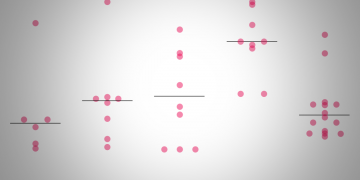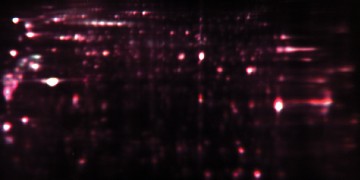
Multiplex Analysis of Cell Death Markers Using Bio-Plex Pro™ RBM Apoptosis Assays
Bio-Rad’s new Bio-Plex Pro RBM Apoptosis Multiplex Assays enable complex, quantitative analyses of biomarkers in the intrinsic apoptosis pathway. Learn more about these biomarkers and view sample data and performance characteristics of these assays in this detailed technical report.

Applications of Bio-Plex Pro™ Cell Signaling Akt and MAPK Assay Panels in Signal Transduction Pathways
The Akt and MAPK signal transduction pathways are key areas of study for their roles in cell growth, function, and death, as well as for their possible roles in cancer development and diabetes. Bio-Rad’s new Bio-Plex Pro™ Akt and MAPK cell signaling assays enable researchers to study the activation of these key pathways as a response to various stimuli. This technical report validates the sensitivity and specificity of these assays after cells were exposed to insulin, EGF (epidermal growth factor), and UV radiation.

Profiling Dynamic Cancer Drug Responses with BioMarker Strategies, LLC and the Bio-Plex® Multiplex Immunoassay System
In an age of personalized medicine, getting the most out of highly targeted cancer therapies takes finding the best molecular targets for each patient. BioMarker Strategies LLC, a small startup, has been developing an innovative method to do this by modeling oncogenic pathway responses, but they needed to accurately measure the levels of phosphoproteins resulting from the activation of these genes. Learn how they are using the Bio-Plex multiplex immunoassay system to accurately quantify the proteins and generate functional signaling profiles for these oncogenes.

High Sensitivity of Bio-Plex® Multiplex System is Key in Study for Novel Melanoma Therapeutics
alt
Melanoma is an aggressive cancer where early detection is essential for patient survival. The Facchiano lab is developing new anti-proliferation molecules against melanoma and is working to identify new molecular markers at the very early stages of pathology. Here Dr Antonio Facchiano discusses the merits of using the Bio-Plex technology to measure dose-dependent changes in expression levels of growth and angiogenic factors in cell lysates and supernatants.

Image Lab™ 4.1, the Latest Software Version, Addresses the Challenges of Multiplex Analysis and Protein Normalization
The updated Image Lab image acquisition and analysis software provides improved tools for total protein normalization using the stain-free technology.

Focus on the Biology: Bio-Rad’s New Bio-Plex Data Pro™ Software Simplifies Multiplex Data Analysis
Many instruments offer multiplexing capability for biomarker measurements. But to handle and make sense of the huge amount of multiplex data requires sophisticated software like Bio-Plex Data Pro, which simplifies organization, import, sorting and visualization of data, and performing calculations and statistical analyses.

Multiplex Analysis of Inflammatory Markers Using Bio-Plex Pro™ Human Th17 Cytokine Assays
The T-helper cell (Th17) pathway has been implicated in several autoimmune diseases and in cancer. New magnetic bead–based assays have been developed for several biomarkers in this pathway. The performance characteristics of these assays are evaluated from data on intra- and inter-assay precision, standard curve recovery, cross reactivity, and linearity of dilution.

Bio-Plex® System in Korea — Seeking to Improve Outcomes for Cancer Patients
Dr Hunseok Lee has known since childhood that he wanted to grow up to become a scientist. “You get to wear white gowns, look through a microscope at various substances so small they can’t be seen by the naked eye — those things were very attractive to me when I was young,” says Lee. But the realities of putting research into practice and translating ideas into experiments have proven far more strenuous than the young Lee anticipated.

New Multiplex Assays for Th17 Cytokine Research
The Bio-Plex Pro human Th17 cytokine panel is a unique blend of magnetic bead-based multiplex immunoassays for the robust and reproducible measurement of 15+1 soluble proteins involved in the T-helper cell type 17 immune response pathway.

Transitioning from Chemiluminescent to Multiplex Fluorescent Blotting: Things to Consider
Today many researchers are considering changing their western blot detection method from chemiluminescence to multiplex fluorescence. There are several drivers behind this trend. Most significantly, fluorescent detection allows users to multiplex their western blots, enabling simultaneous detection of several target proteins at once, reducing or eliminating the need to strip and re-probe. Other benefits of fluorescence include better dynamic range, more quantitative results, and better signal stability over time.
